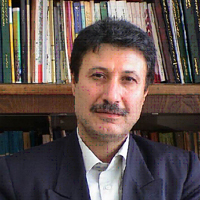دکتر محیا رستمی
-
شهر سنندج در استان کردستان با دارا بودن بخش عظیمی از بافت های فرسوده شهری در هسته و بخش مرکزی شهر نیازمند توجه جدی در امر مدیریت و برنامه ریزی شهری است. هدف این پژوهش این است که تاثیر مولفه های توانمندسازی در بازآفرینی پایدار بافت های فرسوده شهر سنندج را بررسی و تحلیل نماید. پژوهش حاضر از نظر روش، توصیفی - تحلیلی و به لحاظ هدف، کاربردی است. برای جمع آوری اطلاعات از روش کتابخانه ای و میدانی و پرسشنامه استفاده شده است. جامعه آماری تحقیق، ساکنان بافت فرسوده سنندج (328250 نفر) هستند. حجم نمونه از طریق فرمول کوکران 308 نفر محاسبه شد و جهت تکمیل پرسشنامه از روش نمونه گیری تصادفی ساده استفاده گردید. یافته-های حاصل از آمون T نشان داد که وضعیت توانمندسازی در بازآفرینی پایدار بافت فرسوده شهر سنندج در وضعیت نامناسبی قرار دارد. همچنین، براساس نتایج به دست آمده، مولفه آموزش برابر 81/0 بیشترین تاثیر در بازآفرینی پایدار بافت های فرسوده شهر سنندج دارد. بعد از آن، به ترتیب مولفه های؛ شفاف سازی با میزان اثر و سطح اطمینان (001/0 =P، 74/0=β)، مولفه اعتماد بخشی (001/0 =P، 69/0=β)، تشکل ها (001/0 =P، 43/0=β) و دسترسی به منابع (004/0 =P، 29/0=β) دارای اثر معنادار بر بازآفرینی پایدار بافت های فرسوده شهر سنندج بودند. بنابراین می توان چنین استنباط کرد که وضعیت مولفه های توانمندسازی در بازآفرینی پایدار بافت های فرسوده شهر سنندج در سطحی نامناسب قرار داشته و در راستای بازآفرینی پایدار این بافت ها مولفه های آموزش، شفاف سازی و اعتمادبخشی دارای نقش شگرفی هستند که نیازمند توجه بیشتر در برنامه های توسعه شهری در جهت رسیدن به پایداری هستند
کلید واژگان: توانمندسازی, بازآفرینی, بازآفرینی پایدار, بافت فرسوده, شهر سنندجThe Effectiveness of Empowerment Components in Sustainable Regeneration (Case Study: Sanan-daj City)Journal of SHAHR-HA, Volume:11 Issue: 39, 2024, PP 197 -215The city of Sanandaj in Kurdistan province, having a large part of worn-out urban structures in the core and central parts of the city, needs serious attention in terms of urban planning and management. This research aims to investigate and analyze the impact of empowerment components in the sustainable regeneration of worn-out structures in Sanandaj city. The current research is descriptive-analytical in terms of method and applied in terms of purpose. Library and field methods and questionnaires were used to collect information. The statistical population of the research is the residents of the worn-out area of Sanandaj (328250 people). The sample size was calculated as 308 people through Cochran's formula, and simple random sampling was used to complete the questionnaire. The findings of Amon T showed that the state of empowerment in the sustainable regeneration of the worn-out fabric of Sanandaj is in an unfavorable state. Moreover, based on the obtained results, the education component equal to 0.81 has the greatest effect on the sustainable regeneration of worn-out tissues of Sanandaj city. After that, the components of clarification (P = 0.001, β = 0.74), confidence (P = 0.001, β = 0.69), organizations (P = 0.001, 43 β=0.0), and access to resources (p=0.004, β=0.29) had a significant effect on the sustainable regeneration of worn-out tissues in Sanandaj city. Therefore, it can be concluded that the status of the components of empowerment in the sustainable regeneration of worn-out tissues of Sanandaj city is at an inappropriate level, and in the direction of the sustainable regeneration of these tissues, the components of education, transparency, and trust have a great role, which needs more attention in urban development programs to achieve sustainability.
Keywords: Empowerment, Regeneration, Sustainable Regeneration, Dilapidated Fabric, Sanandaj City
- این فهرست شامل مطالبی از ایشان است که در سایت مگیران نمایه شده و توسط نویسنده تایید شدهاست.
- مگیران تنها مقالات مجلات ایرانی عضو خود را نمایه میکند. بدیهی است مقالات منتشر شده نگارنده/پژوهشگر در مجلات خارجی، همایشها و مجلاتی که با مگیران همکاری ندارند در این فهرست نیامدهاست.
- اسامی نویسندگان همکار در صورت عضویت در مگیران و تایید مقالات نمایش داده می شود.



